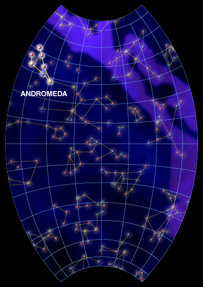Andromeda is an autumn constellation found next to Pegasus.
Click on image for full size
Windows to the Universe original image
Andromeda
The fall constellation Andromeda is a Princess. She looks like a "V"! Andromeda is close to the north pole, so only a few people in the Southern Hemisphere can see it in the spring.
Andromeda's parents were King Cepheus and Queen Cassiopeia. The queen made the god Poseidon very mad, and he sent a monster to eat Andromeda. Perseus rescued her, and so they were put in the sky along with Cepheus and Cassiopeia.
The best way to find Andromeda is to first find Pegasus, the winged horse. The Princess' head is the star Alpheratz, which is also the last star in Pegasus. This same star is the base of the "V". Can you find the rest of the constellation?
You might also be interested in:

Constellations are pictures made up of bright stars which appear close to each other on the sky. Like a game of connect the dots, if you use your imagination when you look at the stars, you may see a dog
...more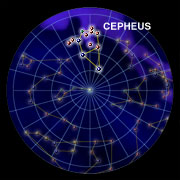
Cepheus was a king in Greek mythology. His wife was Cassiopeia and his daughter was Andromeda. Cassiopeia once said some things to make the sea god angry. A monster was sent up to eat Andromeda, but Perseus
...more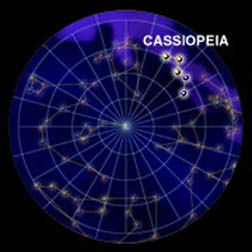
Cassiopeia was the queen of an ancient land. She and her husband, Cepheus, had a daughter named Andromeda. Cassiopeia would always say she was prettier than the sea nymphs. A monster called Cetus was
...more
Many different constellations fill the evening sky in the northern hemisphere. Depending on your location and the season, different constellations can be seen. Northern circumpolar constellations can be
...more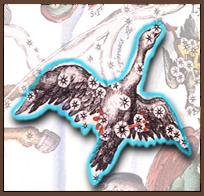
Many different constellations fill the evening sky in the southern hemisphere. Depending on your location and the season, different constellations can be seen. Southern circumpolar constellations can be
...more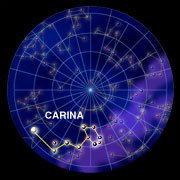
The constellation Carina is known as the Keel. A keel is the wooden bottom of old sailing ships. Carina used to be a part of the large constellation called Argo Navis. It was divided up into four different
...more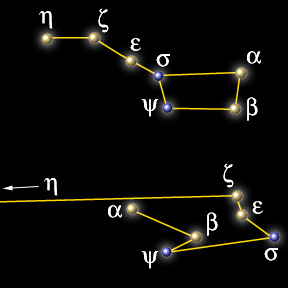
In most cases, however, the stars that we see that seem to be "close" to each other actually are quite far apart, some stars are much closer or farther than others as is shown in the example below of Ursa
...more
In our time, scientists (and most people!) know that the constellations seem to move across the sky because the earth rotates on its axis. What, you may ask, does the turning of the earth have to do with
...more


